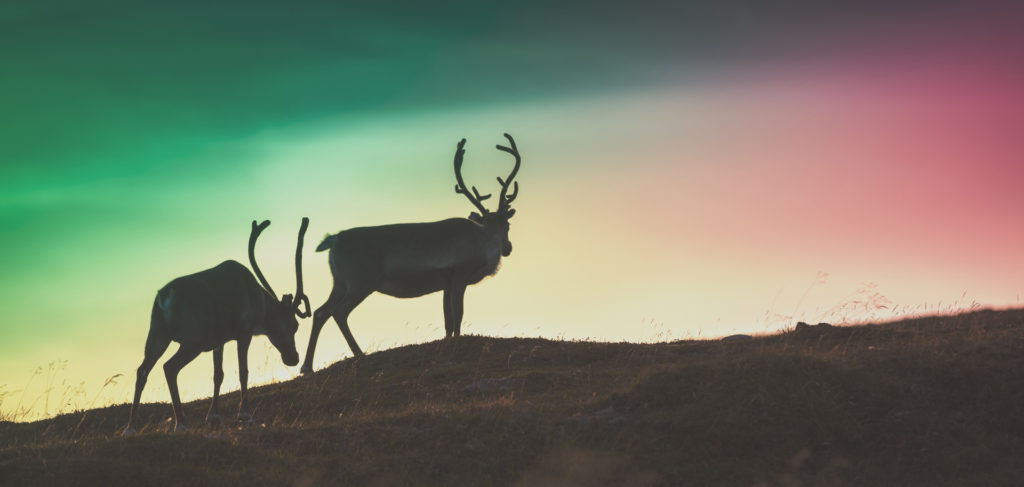What are the Threats to Reindeers in Lapland?
Lapland, a region synonymous with pristine wilderness and enchanting winter landscapes, is home to the iconic reindeer. These majestic creatures are not only a symbol of the region but also an integral part of the local culture and economy. However, reindeers in Lapland face numerous threats that jeopardise their survival. In this blog post, we will explore the various challenges that reindeers encounter in this unique environment.
Climate Change and Its Impact on Reindeer Habitats
Climate change poses a significant threat to reindeer habitats in Lapland. The rising temperatures and changing precipitation patterns are altering the delicate balance of the Arctic ecosystem. Warmer winters result in less snow and more ice, making it difficult for reindeers to access their primary food source, lichen, which they dig out from under the snow. Additionally, the thawing of permafrost affects the vegetation patterns, further reducing the availability of food.
Moreover, the changing climate is leading to more frequent and severe weather events, such as heavy snowfall and rain-on-snow events. These conditions create a hard ice layer on the ground, trapping the lichen underneath and making it inaccessible to reindeers. As a result, reindeers are forced to expend more energy searching for food, which can lead to malnutrition and decreased reproductive success.
Predators and Their Effect on Reindeer Populations
Predation is another significant threat to reindeer populations in Lapland. Natural predators such as wolves, bears, and wolverines pose a constant risk to reindeers, particularly the young and weak individuals. The presence of these predators can lead to increased stress and mortality rates among reindeer herds.
In recent years, there has been a noticeable increase in predator populations due to conservation efforts and changes in hunting regulations. While this is beneficial for maintaining ecological balance, it also means that reindeers are facing heightened predation pressure. This can have a cascading effect on reindeer populations, as higher predation rates can lead to reduced herd sizes and genetic diversity.
Human Activities and Their Consequences for Reindeers
Human activities, such as infrastructure development, tourism, and industrial operations, have a profound impact on reindeer habitats. The construction of roads, railways, and pipelines fragments the landscape, disrupting migration routes and limiting access to essential grazing areas. This habitat fragmentation can lead to increased mortality rates as reindeers are forced to cross dangerous roads and railways.
Tourism, while economically beneficial, can also disturb reindeer populations. The presence of tourists and recreational activities, such as snowmobiling and skiing, can cause stress and displacement of reindeer herds. Additionally, industrial activities, such as mining and logging, can lead to habitat degradation and pollution, further threatening the survival of reindeers in Lapland.
Diseases and Health Issues Facing Reindeers
Reindeers in Lapland are also susceptible to various diseases and health issues. Parasitic infections, such as warble flies and ticks, can cause significant distress and weaken the animals, making them more vulnerable to other threats. Additionally, diseases such as brucellosis and foot rot can spread rapidly within reindeer populations, leading to high mortality rates.
Climate change exacerbates these health issues by creating favourable conditions for the proliferation of parasites and pathogens. Warmer temperatures and increased humidity can lead to higher parasite loads and the emergence of new diseases. This poses a significant challenge for reindeer herders, who must constantly monitor and manage the health of their herds to prevent outbreaks and ensure the well-being of their animals.
Conservation Efforts to Protect Reindeers
Despite the numerous threats facing reindeers in Lapland, there are ongoing conservation efforts aimed at protecting these iconic animals. Various organisations and government agencies are working together to implement measures that mitigate the impact of climate change, reduce habitat fragmentation, and manage predator populations.
One such initiative is the WildForestReindeerLIFE project, which focuses on reintroducing forest reindeer to their original habitats and monitoring their populations using satellite collars. Additionally, efforts are being made to promote sustainable tourism practices that minimise disturbance to reindeer habitats and support local communities.
At VALO Finland, we are committed to raising awareness about the challenges facing reindeers in Lapland and supporting conservation efforts. By providing our guests with immersive and educational experiences, we aim to foster a deeper appreciation for the unique wildlife and cultural heritage of this remarkable region. Our luxury villas offer the perfect base for exploring Lapland’s natural beauty while ensuring a comfortable and memorable stay.
In conclusion, reindeers in Lapland face a multitude of threats, from climate change and predation to human activities and diseases. However, through concerted conservation efforts and responsible tourism practices, we can help protect these magnificent animals and ensure their survival for future generations. Join us at VALO Finland to experience the magic of Lapland and learn more about the incredible reindeers that call this region home.
